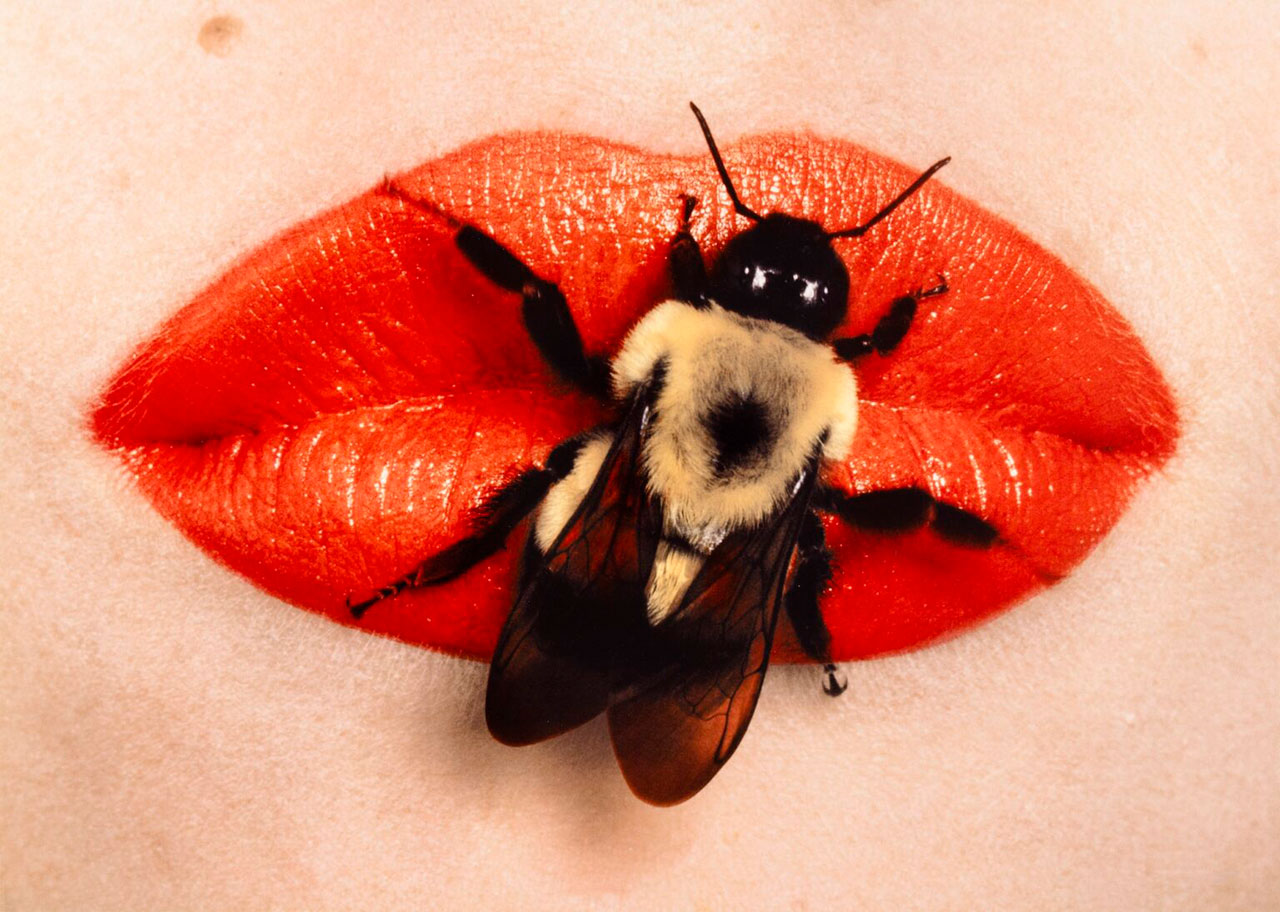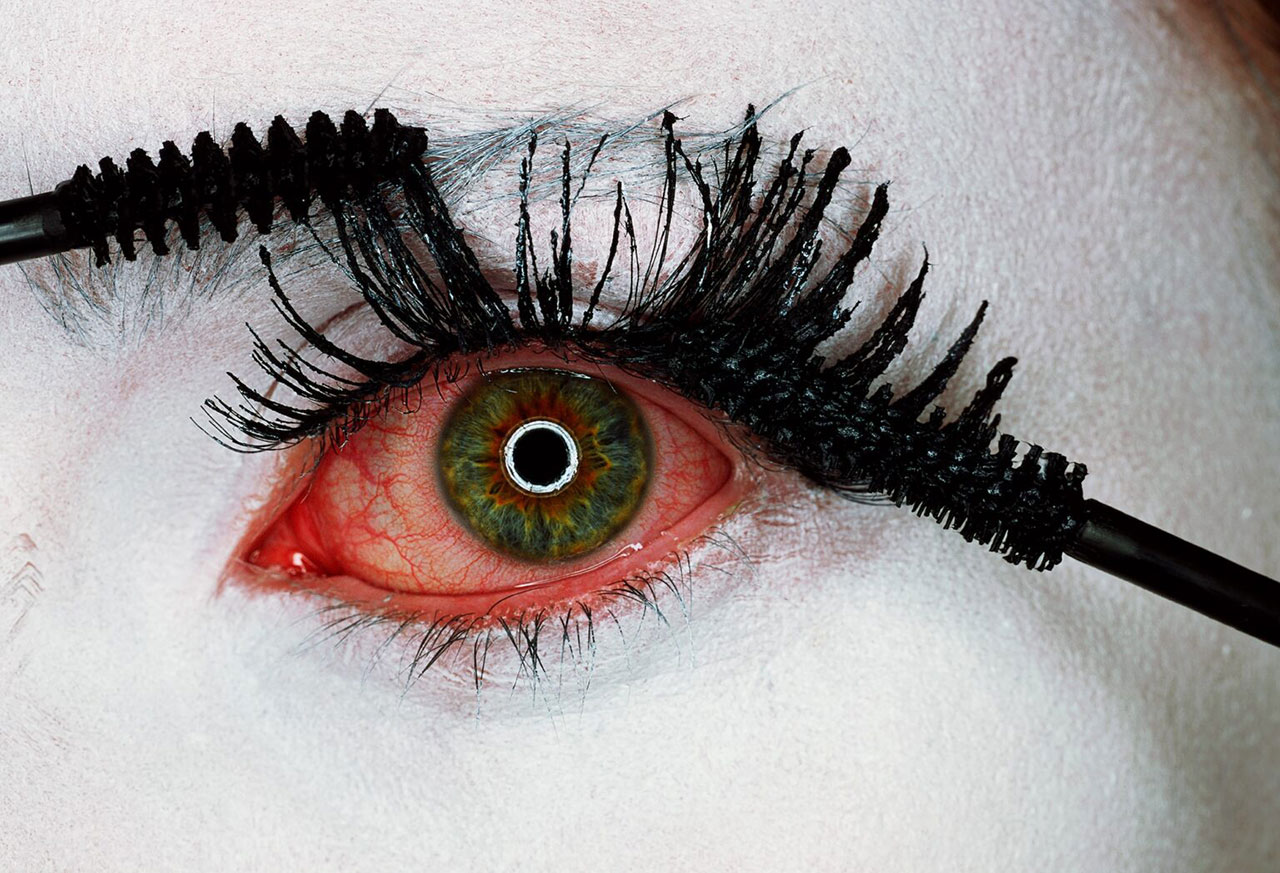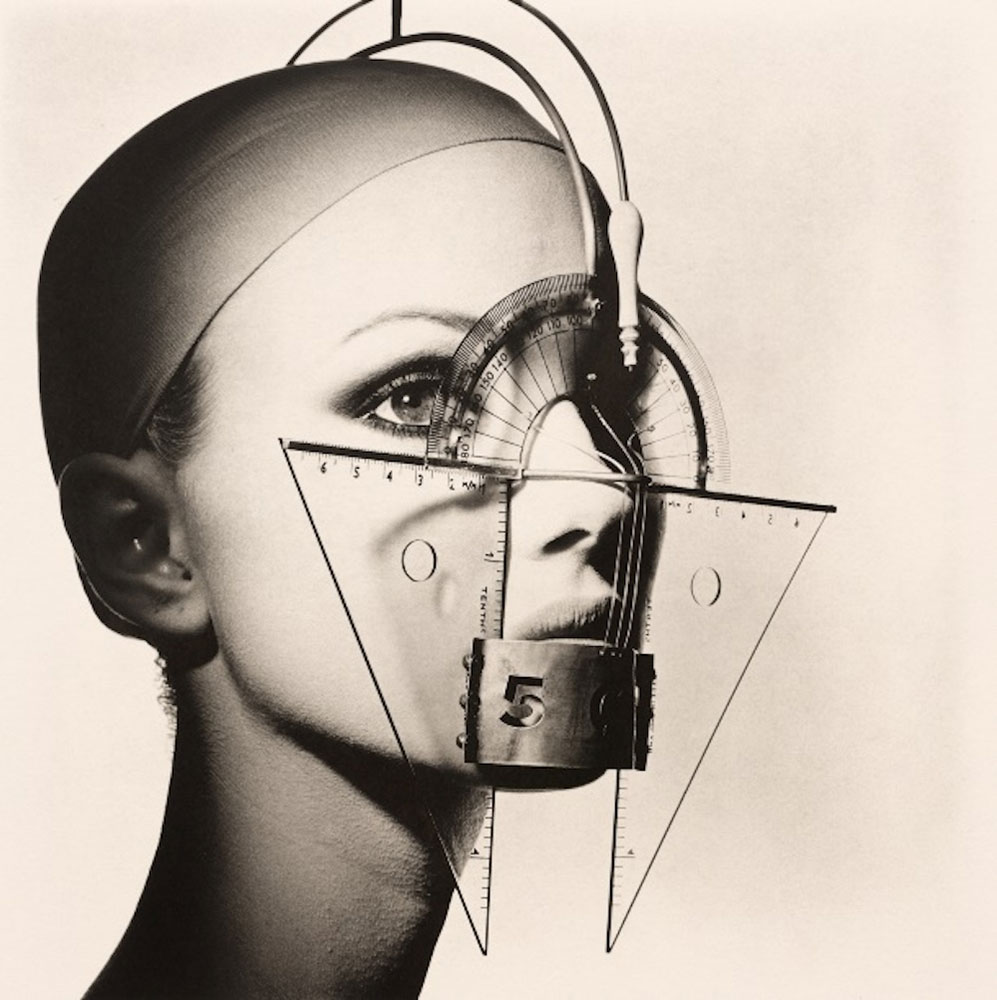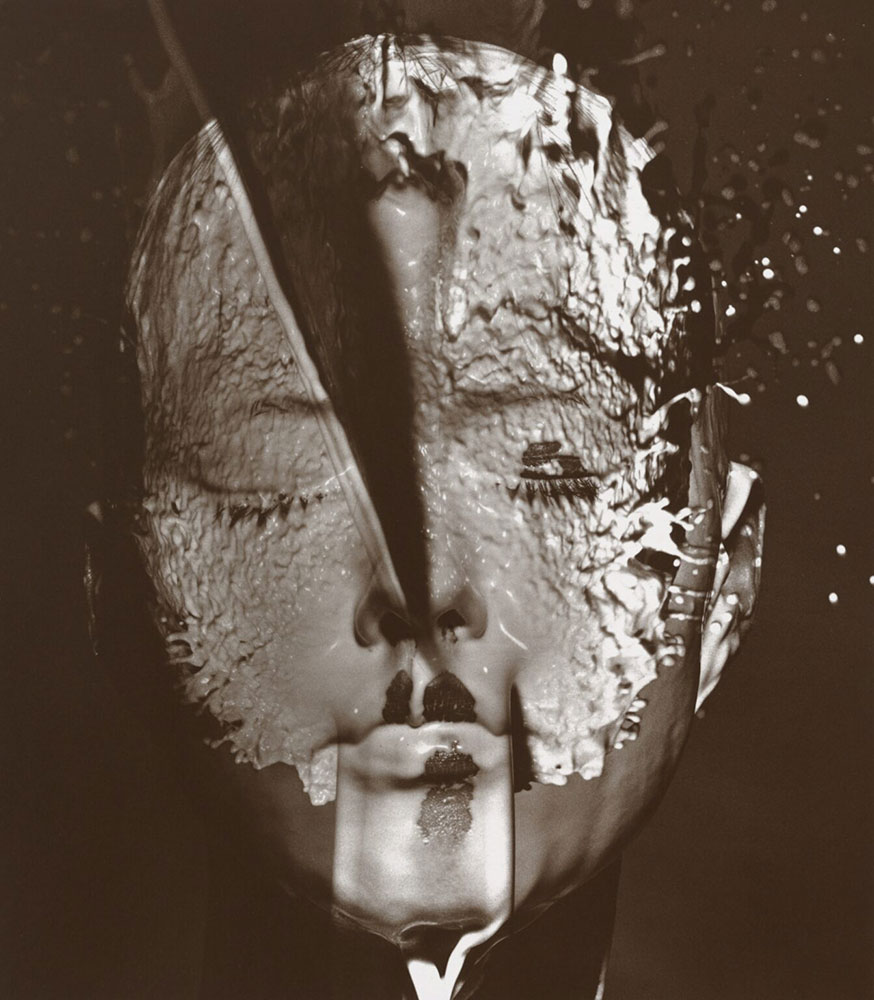PHOTO: Irving Penn-Edge of Beauty
 Irving Penn was one of the most important and influential photographers of the 20th Century. In a career that spanned almost 70years, Irving Penn worked on professional and art projects across multiple genres. He was a master printer of both black-and-white and color photography and published more than 9 books of his photographs and 2 of his drawings during his lifetime.
Irving Penn was one of the most important and influential photographers of the 20th Century. In a career that spanned almost 70years, Irving Penn worked on professional and art projects across multiple genres. He was a master printer of both black-and-white and color photography and published more than 9 books of his photographs and 2 of his drawings during his lifetime.
By Dimitris Lempesis
Photo: Thaddaeus Ropac Gallery Archive
The exhibition “Edge of Beauty” features 14 photographs by Irving Penn, showcasing both his iconic and lesser-known beauty images, this exhibition coincides with Paris Fashion Week – Menswear, and celebrates Penn’s enduring influence on the history of photography. Renowned for the elegance and aesthetic simplicity of his style across fashion imagery, portraiture and experimental personal work, Irving Penn produced beauty photographs that are distinctive for their understated humour and technical concision. These photographs – many made for Vogue during his 65-year tenure there – illustrate concepts loosely related to the cosmetics featured in the magazine, often employing the same formal qualities established by Surrealism to hybridise editorial imagery with fine art. “Bee on Lips” (1995), included in the presentation, is an extreme close-up of a bee crawling across a vividly rouged mouth. Emblematic of Penn’s use of visual puns, it refers to the expression ‘bee-stung lips’, used to refer to the fashion for plumped lips. In “Mascara Wars” (2001), a bloodshot eye starkly contrasts with the model’s powdered snow-white face, with two mascara wands poised at the base and tip of her eyelashes, suggesting a pause in the action. While Penn is known for his extraordinary ability to capture beauty, his works simultaneously render a latent darkness. Juxtaposed with the inexorability of decay, his works endure precisely because they compel viewers to return again and again in an attempt to comprehend their hidden meaning, drawing parallels with artists such as Man Ray. Penn’s photographs are consistently characterised by their formal beauty. His sparse compositions and juxtaposition of sharp line with soft flesh create images that are visually arresting, even – or especially – when they verge on the grotesque or painful. In his beauty photographs, it is the unexpected that engages the viewer, prompting Alexander Liberman, editor of “Vogue” from 1943, to call them ‘stoppers’ – images that make time stand still amid the magazine’s pages.
Born in 1917 in Plainfield, New Jersey to immigrant parents, Penn attended the Philadelphia Museum School of Industrial Arts from 1934–38 and studied with Alexey Brodovitch in his Design Laboratory. A formidable Russian émigré who worked in Paris in the 1920s, Brodovitch taught the application of principles of modern art and design through exposure to magazines, exhibitions, architecture, and photography. After some time in New York as Brodovitch’s assistant at Harper’s Bazaar and various art director jobs, Penn went to Mexico to paint in 1941, traveling through the American South and taking photographs along the way. He was ultimately disappointed by his paintings and destroyed them before returning to New York late the following year. In 1943, the new art director at Vogue, Alexander Liberman, hired Penn as his associate to prepare layouts and suggest ideas for covers to the magazine’s photographers. Liberman, another Russian émigré who had worked in Paris, looked at Penn’s contact sheets from his recent travels and recognized “a mind, and an eye that knew what it wanted to see.” He encouraged Penn to begin taking the photographs that he envisioned, launching a long and fruitful career as well as a collaboration that transformed modern photography. After the Second World War, as Penn quickly developed a reputation for his striking style in still life and portraiture, Liberman sent him around the world on portrait and fashion assignments. These were formative experiences, which confirmed Penn’s preference for photographing in the controlled environment of a studio, where he could trim away anything that was not essential to his compositions and hone in on his subjects. Separate from these assignments, Penn undertook a major personal project, photographing fleshy nudes at close range in the studio and experimenting with their printing to “break through the slickness of the image.” It was a new approach to photography that stemmed from profound reflection on earlier art historical models, but the images were deemed too provocative and not shown for decades. In 1950, Penn was sent to Paris to photograph the haute couture collections for Vogue. He worked in a daylight studio with an old theater curtain as a backdrop, and was graced with an extraordinary model named Lisa Fonssagrives, whom he first encountered in 1947. Born in Sweden and trained as a dancer, she was one of the most sought-after fashion models of the time, with a sophisticated understanding of form and posture. Penn later recalled: “When Lisa came in, I saw her and my heart beat fast and there was never any doubt that this was it.” They were married in London in September 1950. During this time, Penn also worked on a project inspired by a tradition of old prints, photographing the “Small Trades”—butchers, bakers, workmen, and eccentrics who belonged to a disappearing world. Penn’s travel for Vogue increased between 1964 and 1971, taking him to Japan, Crete, Spain, Dahomey, Nepal, Cameroon, New Guinea, and Morocco. On these trips Penn was increasingly free to focus on what truly interested him: making portraits of people in natural light. On the early trips, he adapted existing spaces like a garage or a barn to his needs, and noted the crucial role of a neutral environment to encourage the respectful exchange he was interested in. Eventually this led him to construct a tent studio that could be dismantled and taken from location to location.
Penn felt “in this limbo [of the tent] there was for us both the possibility of contact that was a revelation to me and often, I could tell, a moving experience for the subjects themselves, who without words—by only their stance and their concentration—were able to say much that spanned the gulf between our different worlds.” Penn’s work initially had an ideal outlet on the pages of Vogue, where it was finely reproduced and widely disseminated. However, in the early 1950s, the editors began to feel that Penn’s photographs were too severe for the magazine, that they “[burned] on the page.” As a result, his assignments were reduced and he turned to advertising. Penn welcomed the challenges this new field offered, particularly in the areas of still life photography, and experimented with strobe lights to produce dynamic images that revolutionized the use of photography in advertising. By the early 1960s, magazine budgets were strained and there was a decline in the quality of the offset reproductions. Although Penn was again photographing extensively for the magazine, he grew increasingly disappointed by the way his photographs appeared on the page, commenting that he even avoided looking at them because “they hurt too much.” His solution to this predicament was to quietly pioneer a revival of earlier printing techniques, revolutionary for a time when photographic prints were not considered artistic objects. Beginning with extensive research and experimentation, he investigated nineteenth-century methods that could offer greater control over the subtle variations and tonalities he sought in a print. He pressed on with his investigations until he perfected a complex process for printing in platinum and palladium metals, enlarging negatives for contact printing on hand-sensitized artist’s paper, which was adhered to an aluminum sheet so that it could withstand multiple coatings and printings. In the early 1970s, Penn closed his Manhattan studio and immersed himself in platinum printing in the laboratory he constructed on the family farm on Long Island, NY. This led to three major series conceived for platinum: “Cigarettes”, “Street Material” (1975–76) and “Archaeology” (1979–80). Like his earlier “Nudes” series, this work departed radically from the prevailing uses of photography. Although many found it repulsive, Penn saw in the subject matter “a treasure of the city’s refuse, intriguing distorted forms of color, stain, and typography.” In 1983, Penn re-opened a studio in the city and resumed a busy schedule of commercial work and magazine assignments. The following year, he was honored with a at The Museum of Modern Art, which toured internationally until 1989. After the retrospective, Penn resumed painting and drawing as a creative pursuit, even incorporating platinum printing into his practice. He also found creative freedom through an invigorating long-distance collaboration with the Japanese designer Issey Miyake, who sent his dynamic, sculptural designs to New York for Penn to interpret photographically. Penn’s creativity flourished during the last decades of his life. His innovative portraits, still life, fashion, and beauty photographs continued to appear regularly in Vogue. The studio was busy with magazine, advertising, and personal work, as well as printing and exhibition projects. Penn eagerly embraced new ideas, constructing cameras to photograph debris on the sidewalk, experimenting with a moving band of light during long exposures, or with digital color printing. Book projects were also a priority, and Penn lavished attention on their production, from the design to the quality of the printing. Determined to shape the body of work he left behind from such a prolific career, he also carefully structured and reduced his archives. Particularly after Lisa’s death in 1992, he sought solace in his work and in the structure of his studio schedule, and he would paint most nights after work and on weekends. In 2009, Penn died in New York, at the age of 92.
Photo: Irving Penn, Bee on Lips, New York, 1995, dye transfer print. © The Irving Penn Foundation, Courtesy Thaddaeus Ropac Gallery
Info: Curator: Tom Pecheux, Thaddaeus Ropac Gallery, 7 Rue Debelleyme, Paris, France, Duration: 22/6-13/7/2024, Days & Hours: Tue-Sat 10:00-19:00, https://ropac.net/



